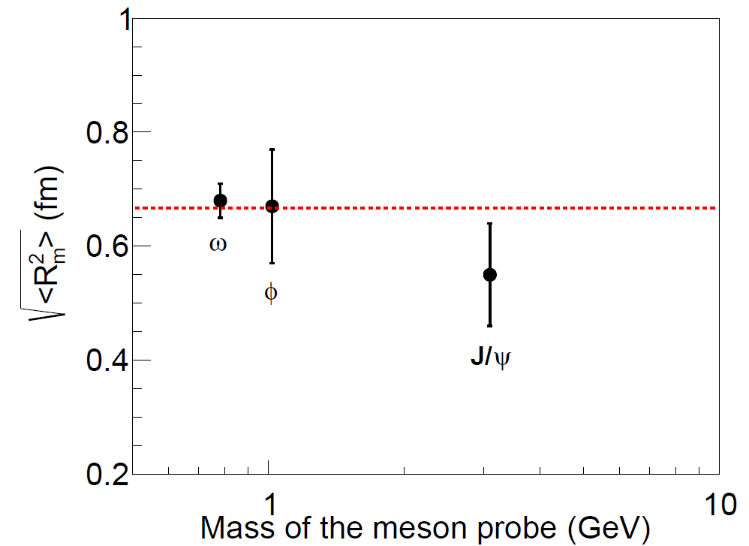May 13 2021
Researchers from the Institute of Modern Physics (IMP) of the Chinese Academy of Sciences (CAS) have presented a study of the proton mass radius in the Physical Review D journal on May 11th, 2021.
 Proton mass radius extracted from experimental data. Image Credit: Physical Review D.
Proton mass radius extracted from experimental data. Image Credit: Physical Review D.
The mass-radius of protons has been established to be approximately 0.67 ± 0.03 fm, which is evidently smaller when compared to the proton charge radius.
In the Standard Model, the proton is a composite particle composed of gluons and quarks and has a non-zero size. The proton radius is a global and basic property of the proton. It is associated with the color confinement radius—a property controlled by quantum chromodynamics (QCD).
The proton radius is around 100,000 times smaller than that of a single atom, and the sizes of the gluon and quark are many orders smaller when compared to the radius of the proton. Various distributions are used by scientists to explain the proton shape, like mass distribution and charge distribution.
The proton charge radius has been accurately quantified by investigators through the high energy electron-proton elastic scattering or Lamb shift of the muonic hydrogen, with an average value of 0.8409 ± 0.0004 fm offered by the Particle Data Group. However, an understanding of proton gravitational properties, like proton mass-radius, has continued to be highly limited.
According to recent theoretical studies by Dmitri Kharzeev, the proton mass-radius is related to the scalar gravitational form factor of the proton.
Dr Rong Wang, Study First Author, Chinese Academy of Sciences
By analyzing the vector meson photoproduction data for phi, omega, and J/psi from the Spectrometer Arrangement for PHoton Induced Reactions (SAPHIR) experiment at Bonn University, the GlueX experiment at Jefferson Lab, and the Laser Electron Photons (LEPS) experiment at SPring-8 facility, the team established the proton mass radius and the scalar gravitational form factor.
In the meantime, Professor Dmitri Kharzeev, a theoretical physicist from Stony Brook University, achieved a similar outcome by utilizing GlueX J/psi data. The mass radius of the proton was estimated to be 0.55 ± 0.03 fm.
Both results might be the first-ever values of the proton mass-radius with experimental evidence. The determination of the proton mass radius will improve our understanding of the origins of proton mass and the color confinement mechanism of strong interaction.
Dr Rong Wang, Study First Author, Chinese Academy of Sciences
Many questions continue to persist. “The smaller mass-radius implies that the mass distribution is significantly different from the charge distribution of the proton,” stated Professor CHEN Xurong, a researcher from IMP.
At present, researchers are trying to get a better idea of the structure and mass radius of protons. The GlueX experiment performed at Jefferson Lab will offer more information in the days to come. What is more interesting is that upcoming electron-ion colliders both in China and in the United States will offer Upsilon vector meson electroproduction data to scientists to gain a better insight into these queries.
The study was funded by the Strategic Priority Research Program of CAS and the National Natural Science Foundation of China.
Journal Reference:
Wang, R., et al. (2021) Extraction of the proton mass radius from the vector meson photoproductions near thresholds. Physical Review D. doi.org/10.1103/PhysRevD.103.L091501.